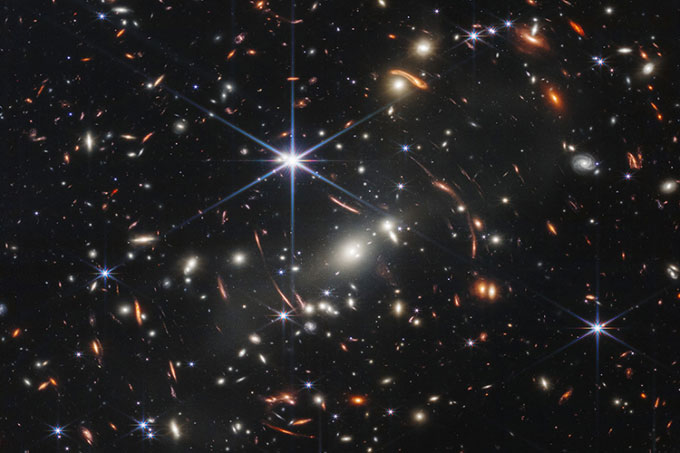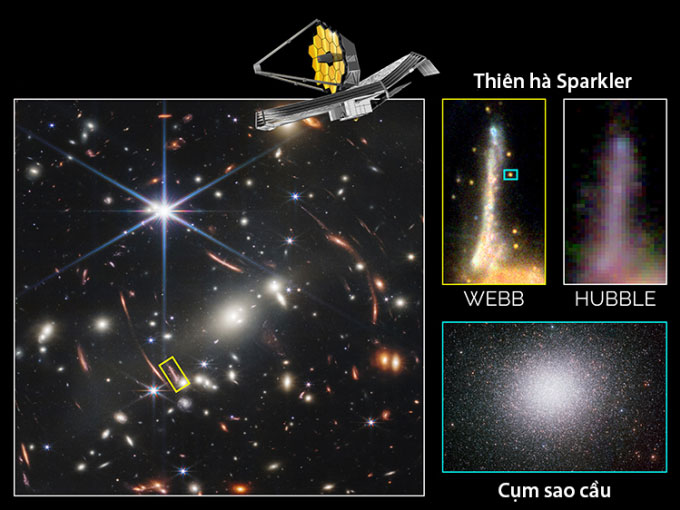The analysis of the first deep field image from the James Webb Space Telescope reveals globular clusters over 13 billion years old surrounding the Sparkler galaxy.
In Webb’s highly detailed deep field image of the SMACS 0723 galaxy cluster, first released on July 11, astronomers were quickly captivated by a magnified structure they referred to as the Sparkler galaxy.

SMACS 0723 galaxy cluster captured by the James Webb Space Telescope. (Image: NASA)
Located 9 billion light-years away, this galaxy is named for the sparkling celestial objects that appear as tiny reddish-yellow dots surrounding it. According to a new study published in the Astrophysical Journal Letters, these sparkling dots may be young star clusters actively forming stars or globular clusters—ancient star collections from the early stages of a galaxy, containing clues about its formation and earliest development, as reported by SciTech Daily on November 28.
From the initial analysis of 12 bright sparkling dots around the Sparkler galaxy, the research team identified 5 of them not only as globular clusters but also as the oldest structures of their kind ever known, formed just half a billion years after the Big Bang. The Big Bang event occurred about 13.8 billion years ago, meaning these globular clusters are over 13 billion years old.

Magnified image showing star clusters around the Sparkler galaxy. (Image: NASA)
“Webb was designed to search for the first stars and galaxies, helping us better understand the origins of complexity in the universe, such as chemical elements and the building blocks of life,” said Lamiya Mowla, a postdoctoral researcher at the Dunlap Institute of Astronomy & Astrophysics.
“Looking at the first images from Webb and discovering ancient globular clusters around a distant galaxy is an incredible moment, something that was not possible with previous images from the Hubble Space Telescope,” added co-author Kartheik G. Iyer from the Dunlap Institute of Astronomy & Astrophysics.
The Sparkler galaxy is particularly special not only for the sparkling dots surrounding it but also because this structure is magnified 100 times in Webb’s deep field image due to gravitational lensing, where the SMACS 0723 galaxy cluster in the foreground distorts what lies behind it, much like a giant magnifying glass. Furthermore, gravitational lensing creates three distinct images of the Sparkler, allowing astronomers to study the galaxy in greater detail.
Since Webb can observe star clusters across a range of wavelengths, the research team can model them to gain a better understanding of their physical characteristics, such as their age and the number of stars they contain. “We hope that the knowledge gained from observing globular clusters from such great distances with Webb will further advance science in the search for similar objects,” emphasized Kartheik.

















































